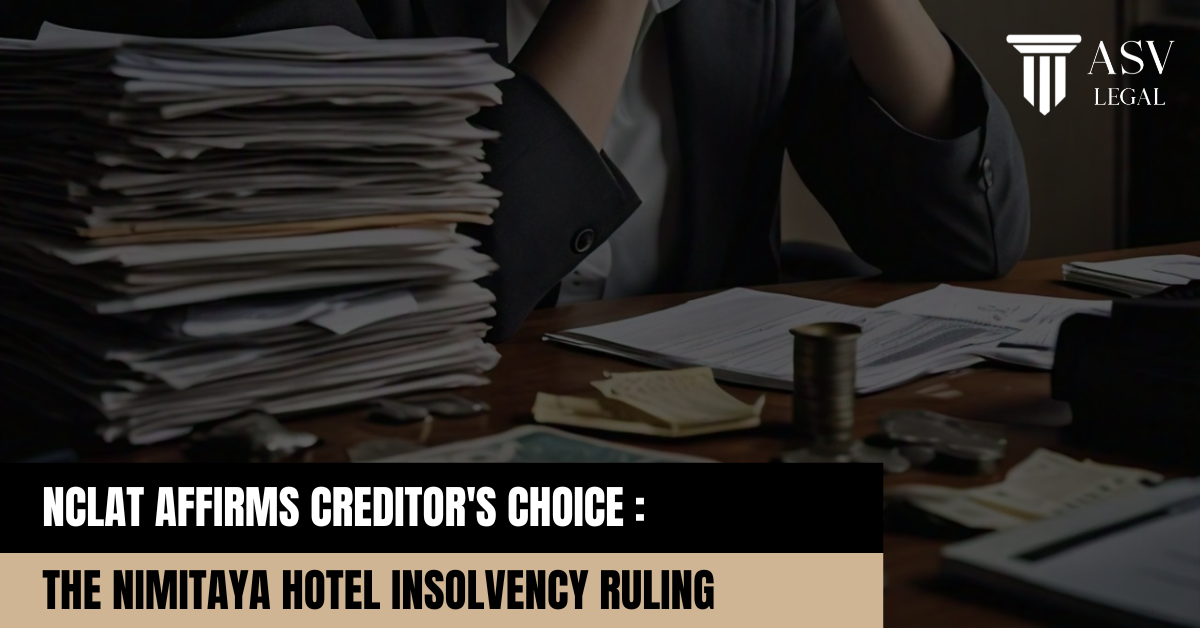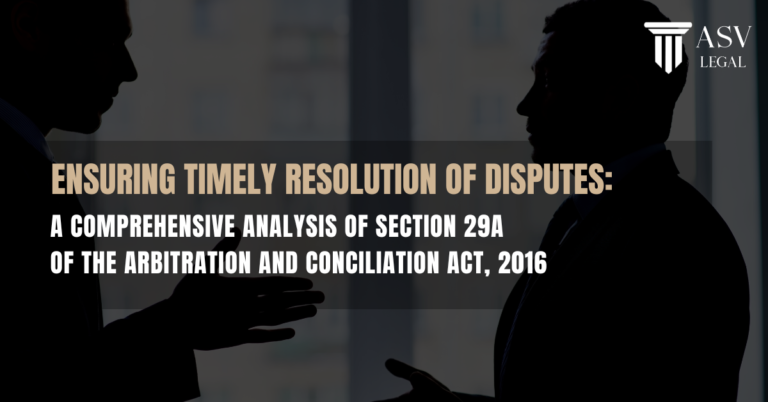Written By: Abhishek Kumar Jaiswal
Introduction
On August 20, 2024, the NCLAT[1], Principal Bench, New Delhi, rendered its judgment in Company Appeal (AT) (Insolvency) No. 1440 of 2024, concerning the insolvency proceedings of Nimitaya Hotel & Resorts Pvt. Ltd. The appeal, filed by Sanjeev Mahajan, a shareholder and promoter of Nimitaya, challenged the rejection of his settlement proposal under Section 12A[2] of the Insolvency and Bankruptcy Code, 2016 (IBC). The NCLAT upheld the earlier decision of the NCLT[3] and confirmed the approval of a resolution plan submitted by Nehru Place Hotels and Real Estates Pvt. Ltd., effectively dismissing Mahajan’s appeal.
Background
The insolvency proceedings were initiated by Indian Bank (formerly Allahabad Bank) against Nimitaya Hotel & Resorts Pvt. Ltd., following defaults in the repayment of financial facilities which was later admitted on December 24, 2021. Throughout the process, Mahajan, in his capacity as a promoter, made multiple attempts to settle the outstanding debts by submitting proposals under Section 12A of the IBC.
In this case, Indian Bank constituted the sole member of the Committee of Creditors (CoC), giving it exclusive authority to evaluate Mahajan’s settlement offers. Despite Mahajan’s numerous efforts to propose settlements, the CoC rejected them all, preferring instead to proceed with the resolution plan submitted by Nehru Place Hotels, which promised a higher recovery.
In July 2022, the NCLAT granted Mahajan the opportunity to submit a fresh proposal under Section 12A, which he did by offering over Rs. 81 crores. This offer, however, was rejected by Indian Bank. By November 2022, Mahajan revised his offer to Rs. 100 crores, but the CoC again chose to support the resolution plan, which was valued at Rs. 120.01 crores and voted in favour of the resolution plan.
Mahajan challenged the CoC’s decision and his primary argument was that the settlement proposals were competitive in value and should have been accepted. Mahajan contended that the CoC’s preference for the resolution plan was unjust, given that his offers provided a viable alternative for resolving the company’s insolvency and would ensure the continued existence of the Company which is the primary objective of IBC.
Decision of The Hon’ble NCLAT
The NCLAT, chaired by Justice Ashok Bhushan, upheld the decision of the CoC, emphasizing several critical legal principles. First, the Tribunal reaffirmed the long-standing principle that the CoC’s commercial wisdom is paramount in insolvency proceedings. Under the IBC, the CoC has the exclusive authority to evaluate and approve resolution plans or settlement proposals, and its decisions are subject to judicial review only on limited grounds, such as arbitrariness or illegality. The NCLAT found that in this case, the CoC’s decision was neither arbitrary nor illegal, but rather a considered judgment based on sound commercial reasoning.
The Tribunal further noted that while Mahajan’s settlement offers were competitive in terms of monetary value, they required the release of personal guarantees—a significant issue for Indian Bank. By contrast, the resolution plan submitted by Nehru Place Hotels did not include such a condition and offered greater security for the creditor. Given the superior terms of the resolution plan, the CoC’s decision to approve it was based on legitimate commercial considerations.
Another key point addressed by the NCLAT was the finality of the insolvency resolution process. The Tribunal emphasized that once the CoC has approved a resolution plan, the process is deemed final. In this case, the statutory 330-day Corporate Insolvency Resolution Process (CIRP) period had already expired, and the CoC had approved the resolution plan. Allowing Mahajan to continue submitting revised settlement proposals post-approval would undermine the certainty and efficiency of the insolvency process, which is designed to provide timely resolutions.
CONCLUSION
In reaching its decision, the NCLAT referenced relevant judgments of the Supreme Court, including Swiss Ribbons Pvt. Ltd. v. Union of India and Vallal RCK v. Siva Industries. These precedents underscore the principle that while CoC decisions under Section 12-A may be subject to judicial scrutiny, such review is limited to determining whether the CoC’s decision was arbitrary. The judgment serves as a reminder that while the IBC provides flexibility for debtors and creditors to reach settlements, the process is ultimately governed by the commercial wisdom of the CoC. Once the CoC has made its decision, the courts will not interfere unless there is clear evidence of arbitrariness or illegality.
[1] National Company Law Appellate Tribunal
[2]Section 12A of the Insolvency and Bankruptcy Code (IBC) allows for the withdrawal of an insolvency application against a corporate debtor subject to 90% approval of the CoC members.
[3] National Company Law Tribunal



